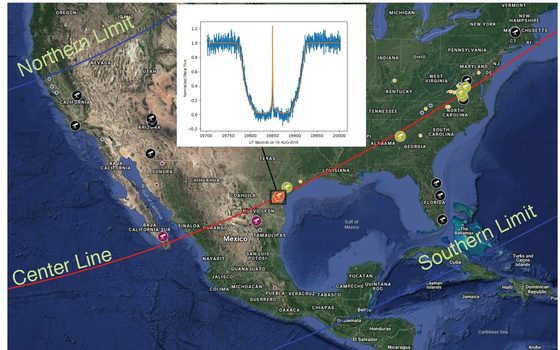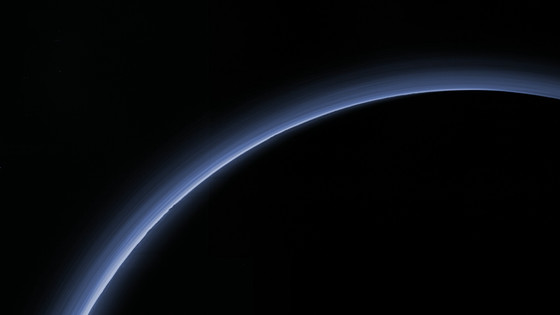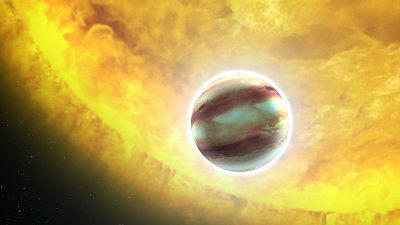It turns out that Pluto's atmosphere is getting thinner and thinner

As Pluto passed in front of the star on August 15, 2018, a team of astronomers at the Southwest Research Institute (SwRI) observed Pluto's atmosphere over the sun at multiple locations in the United States and Mexico. By measuring Pluto's dilute atmosphere from this phenomenon, the Southwest Institute reports that it has found compelling evidence that Pluto
SwRI scientists confirm decrease in Pluto's atmospheric density | Southwest Research Institute
https://www.swri.org/press-release/scientists-confirm-decrease-plutos-atmospheric-density
Pluto's atmosphere is starting to disappear | Live Science
https://www.livescience.com/pluto-atmosphere-may-be-disappearing
Elliott Young, who is a space science engineer, senior program manager of SwRI is 'since 1988, in order to observe the changes in Pluto's atmosphere, of unmanned spacecraft to the occultation phenomenon has been used. 2015 New Atmospheric density was measured when Horizons approached Pluto, and it was found that Pluto's atmospheric density was increasing, but observations in 2018 revealed that the increasing trend had ceased. ' He says.
Normally, when observing a celestial body with an atmosphere, the light becomes dark as it passes through the atmosphere. In other words, if the amount of light (vertical axis) and time (horizontal axis) are represented in a graph, it will be U-shaped centering on the moment of empe. However, according to the observation in 2018, the 'central flash' phenomenon in which the amount of light is restored for a moment occurred at the moment of the emperor, and the following W-shaped graph was drawn. The observed central flash phenomenon seems to have been stronger than anyone has ever seen in Pluto's observations so far, which indicates that Pluto's atmospheric density is lower than before. The research team is arguing.

Like Earth, Pluto's atmosphere is mainly composed of nitrogen. However, the atmospheric density of Pluto depends on the vapor pressure of the nitrogen ice on the surface, and when the temperature of the ice on the surface changes, the atmospheric density also changes significantly. Pluto takes 248 years to orbit the Sun, and the distance from the Sun to Pluto varies from about 30 astronomical units to 50 astronomical units. As Pluto moves away from the Sun, the amount of light that reaches Pluto from the Sun decreases, the vapor pressure of ice decreases, and the air density also decreases.
According to the research team, Pluto has been away from the Sun for the last 25 years, but the vapor pressure and atmospheric volume have been rising due to 'thermal inertia.' 'Thermal inertia is like the sun warming the sand on a beach. The light from the sun shining on the beach is strongest at noon,' said Restry Young, a researcher at SwRI. The hottest beach temperatures are slower from noon. The same principle is that the atmosphere persists despite the distance of Meiou from the Sun, which is the same as that of Meiou, which is warmed by the sun. It is probable that the atmospheric density was increasing because the gaseous nitrogen continued to spring up as the surface of the earth continued to warm the nitrogen ice. '

However, since the surface of Pluto has finally begun to cool around 2018, it is thought that the atmosphere of Pluto has become thinner. The researchers say the observations may give a better understanding of Pluto's subterranean layers, especially from heat conduction to elucidate Pluto's composition.
Related Posts:
in Science, Posted by log1i_yk







